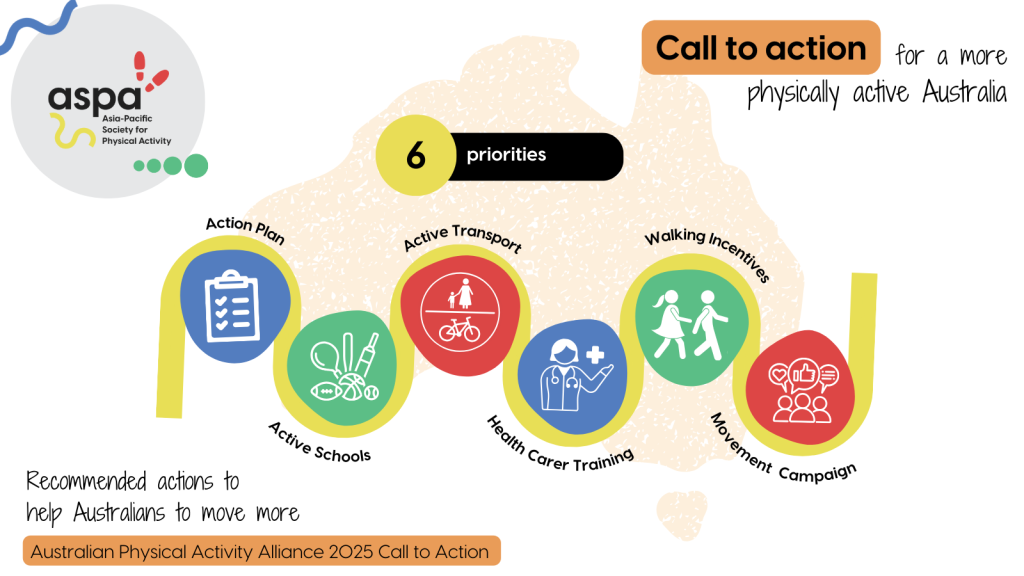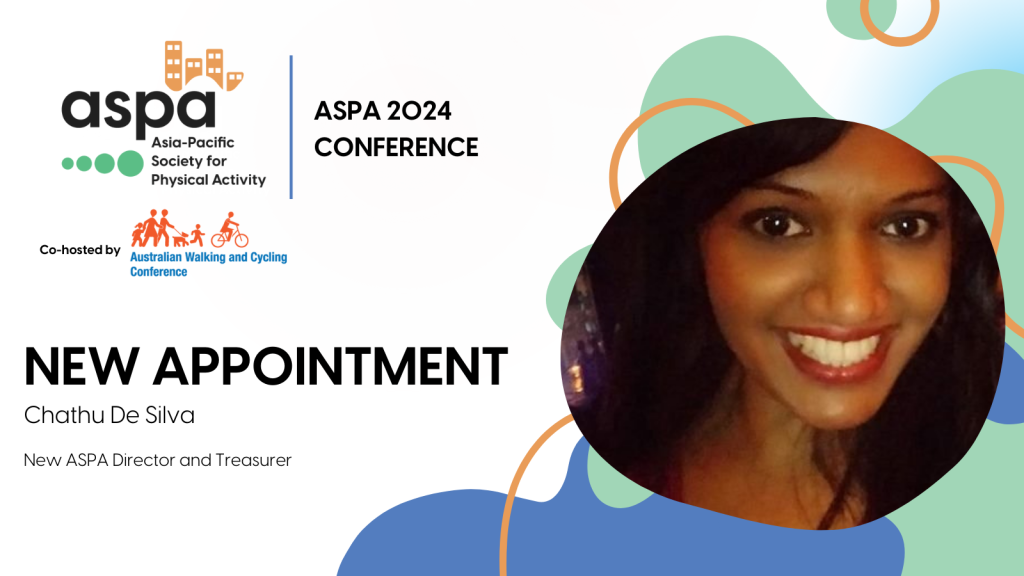‘The Aussie Movement’; experts call for a long-term legacy vision to be realised NOW
Downloadable PDF version here: The Aussie Movement
Australia will host its third summer Olympic games. Congratulations to Brisbane. The 2032 Olympics has been pitched as a sustainable and cost-effective event that will leave a growing legacy for Queensland, and Australia.
However, Olympic legacy is the result of a vision and action. Olympic legacy includes all the tangible and intangible long-term benefits associated with hosting the games, before during and after the event.
The Australasian Society for Physical Activity (ASPA) calls on Australia to be bold and articulate such a vision now. A vision that connects all Australians with the remarkable power of the games. To choose movement for life – The Aussie Movement.
An Aussie Movement that mirrors the ethos of the Olympic Movement.
An Aussie Movement that:
- recognises the breadth of benefits associated with physical activity and sport, its contribution to achieving global sustainability goals, tackling gender equality, good health and wellbeing, quality education and more.
- Recaptures Australia’s standing as an active nation and providing a strategic roadmap for all Australians to unite around a shared purpose – more Australians moving more often.
Now is the time for establishing authentic buy-in to Australia being the most active nation. The medal for the most active nation will come through sport, but also through everyday Aussie Movement like walking and bicycling. Australia can learn from the knowledge gained hosting two previous Olympic games, as well as looking to global experience of capitalising on legacy opportunities. This means looking beyond elite athlete pathways and embracing the opportunities for an active nation.
These opportunities must align with the eight evidence-based strategies that work for physical activity;
- Promoting physical activity through public education
- Harnessing the power to inspire through elite athletes telling their stories
- Embedding physical activity prescription and referral through healthcare
- Ensuring inclusive and affordable opportunities to participate in sport, on and off the field
- Making active travel the default choice for short journeys
- Integrating movement into our urban planning of our cities, towns, and neighbourhoods
- Mandating quality school physical education and sport, with active school environments for all Aussie kids
- Offering physical activity opportunities through workplaces
Australia should unite, state and federal governments and collaborate with private sector, academics, commercial and multi-disciplinary sectors, to use the greatest show on earth as a platform for an Aussie Movement.
What action is needed now to ensure a long-term legacy vision; a long-term Aussie movement be achieved? We call for the following to be prioritised and realised:
- The development of a comprehensive national physical activity plan.
- A transparent measurement plan to monitor and assess progress with key leads across government, sport and physical activity sectors.
- A national research hub that co-ordinates latest research and accelerates the translation of evidence into policy and practice.
- A coalition of national physical activity and sport advocates to harness the power of cross-sector voices.
Australia has a golden opportunity to position itself, centre stage for hosting a celebration of Australia’s active culture. We call on federal and state governments for their political leadership and their unshakeable support in making the 2032 Olympics so much more than an event but an opportunity to enrich Australian culture.
Let’s strive for Gold, inspiring Australia be active, through the Aussie Movement starting now.
Supplementary text: Lancet pre-Olympic series led by Associate Professor Melody Ding University of Sydney
-
Ahead of the 2020 Tokyo Olympics and Paralympics, The Lancet launches its third Series on physical activity, which extends our knowledge base from previous Series’ (2012 and 2016) on the importance of regular physical activity and sport to our health and wellbeing.
-
In the past decade, not enough progress has been made to improve physical activity worldwide, with adolescents and people living with disabilities (PLWD) among the least likely populations to have the support needed to meet WHO’s physical activity guidelines.
-
https://www.thelancet.com/series/physical-activity-2021
8 Investments that work for physical activity International Society of Physical Activity and Health



